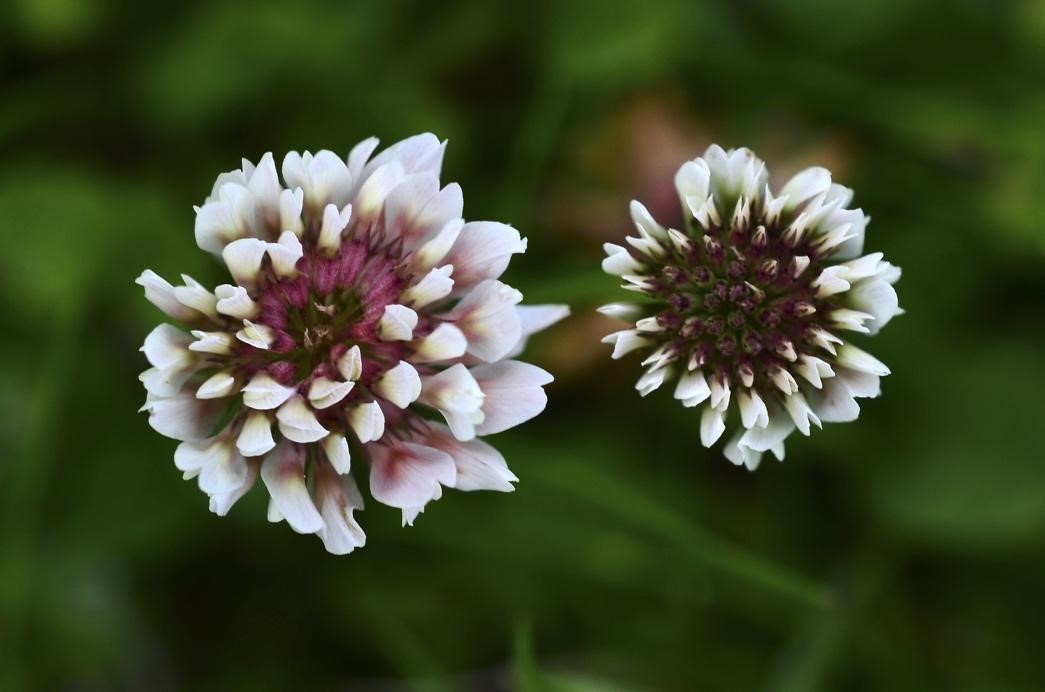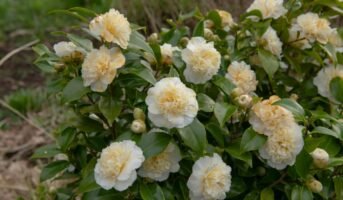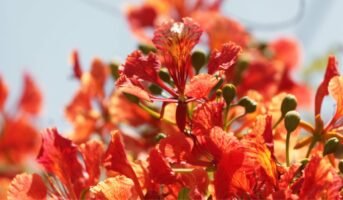
What is a Trifolium Repens plant?
Trifolium Repens is an herbaceous plant that can live for two years. This plant originates from the bean family Fabaceae. It is native to Europe and Central Asia and is the most cultivated type of clover. It was introduced worldwide as a forage crop and is now common in North America, Australia, and New Zealand grassy areas. It is often termed “white clover”. Furthermore, it is sometimes named “Dutch clover” for intermediate varieties and “Ladino clover” for large varieties. The plant reaches a height of 0.25 to 0.50 feet and spreads 1.00 to 1.50 feet in width. The plant blooms from May to June and is usually white.
| Common Name | White Clover |
| Botanical Name | Trifolium Repens |
| Other common Names | English: Dutch clover
Spanish: Trebol; Trebol Blanco; Trebol rastrero French: Trefle blanc; Trefle rampant Portuguese: trevo-branco; trevo-rasteiro |
| Family | Fabaceae |
| General Description | This is a creeping herbaceous plant mostly encountered in spring and winter. |
| Flowers | Small peaked flowers are white to pale pink and are arranged in dense globular clusters. |
| Leaves | The alternate arranged leaves are hairless. The leaves have three leaflets with pear v-shaped markings. |
| Fruit/Berries | Tiny pods are hidden under the flowers, and each fruit has three to four seeds. |
What is the common name for Trifolium repens?
Trifolium Repens plant commonly known as white clover. It is a herbaceous perennial plant that belongs to the Clover or trefoil genus from the family Fabaceae. There are around 300 species of flowering plants.
Trifolium Repens: Distribution
Trifolium Repens plant is native to Europe and Central Asia. Globally, it forages as a crop. The plant grows in temperate and sub-tropical regions and is common to weeds, lawns, gardens, roadsides, open woodlands, and alpine vegetation.
This clover plant has widely been used as a model organism for global research in ecology and urban evolution. The plant has been extensively studied for the production of cyanide. Cyanide is useful for clover plants as a deterrent to herbivores. In analysing urban-rural differences, it has been discovered that cyanide production increased with increasing distance from city centres.
Trifolium Repens: Varieties and subspecies
The following are types of the Trifolium Repens plants:
- Trifolium repens subsp. macrorrhizum
- Trifolium repens var. nevadense
- Trifolium repens var. ochranthum
- Trifolium repens var. orbelicum
- Trifolium repens var. orphanides
- Trifolium repens subsp. prostratum
Trifolium Repens: Cultivation
Trifolium Repens plant is the most crucial forage plant in temperate zones. This plant is commonly grown in a mixture of forage grasses. Such a mixture optimises livestock production and reduces bloat risk to livestock associated with excessive plants. This mixture also helps avoid issues arising from cyanogenic glycoside intake of pure clover varieties. The plant grows well as a companion plant among lawns, grain plants, vegetable rows, and pasture grasses. It is often added to lawn seed mixes, providing a green cover to poor soil conditions. These plants can also tolerate mowing and grazing and grow on different soil types and pHs. Trifolium Repens is also considered organic pasture management due to its ability to fix nitrogen and compete with weeds.

What is white clover good for?
The white clover plant is widely grown as a cold-season pasture plant, when combined with other perennial grasses. It is considered an excellent mulch owing to its properties for vegetable gardens, orchards, and vineyards. Further, White clover tea is popular for its health benefits, and helps in detoxification. The plant is also known for its anti-inflammatory and immunity-boosting properties.
Trifolium Repens: Uses
There are multiple uses of this plant. Some of these are listed below:
-
Forage management
It is of a high nutritional value. The plant can withstand grazing. The plant fixes nitrogen, improves soil, and provides pollen and nectars for pollinators. The plant produces high-quality pastures for grazing. It is an excellent feed for livestock and poultry.
-
Culinary uses
The plant’s leaves and flowers are valuable survival food. The plant is high in protein, widespread, and plentiful. It is not easily digestible raw but can be consumed after five to ten minutes of boiling. Dried versions of the plant can be smoked as an alternative to tobacco.
-
Medicinal uses
In India, this plant is considered a folk medicine for treatments against worms.
Trifolium Repens: Care
The Trifolium Repens plant does not need much care. Placing it in slightly acidic soil with good drainage and not letting the soil dry out completely helps with plant growth.
-
Light
The plant performs well in partial sun, however, it can be planted next to plants that get full sunlight.
-
Soil
The most important requirement for soil is that it has good drainage.
-
Water
The plant performs best in evenly wet soil. It can tolerate dry ground, but this will hinder the plant from spreading out.
-
Fertiliser
As the plant itself is a nitrogen-fixer, there is no use for fertilizer. The plant helps provide nitrogen for other plants to feed from and hinders other weeds from sprouting.
Trifolium Repens: Problems faced in Planting
The plant is aggressive in growth and considered by many a weed, especially for those who wish to eradicate their lawns. The plant is prone to attack by pests and diseases. Clover root weevil is identified as the most dangerous pest. This pest feeds on leaves and nitrogen-fixing nodules. This reduces the nitrogen-fixing capabilities and the general vigour of the plant.
The plant may also be inflicted with diseases from viruses and bacteria. An example is the Alfalfa mosaic virus (AMV), which leads to yellow streaks parallel to leaf veins, distorting leaves and stunted plant growth. To tackle this, plant varieties resistant to this should be used. Root rot infection may occur where some roots are in tan to red colouration and the seedlings are infected. Maintaining soil and optimum soil pH can help protect the plant from disease.
Trifolium Repens: Propagation
The Trifolium Repens plant is the most widely grown clover in the world. It performs well in many types of soil but best in well-draining clay or loam. The plant optimally grows at pH 5.5 and 7.0. The plant tolerates shade, mowing, and field traffic well and thus it is suited to be used as a cover crop. Clover is planted by drilling or broadcasting. The plant is often planted within pastures or with grass seed to establish a mixed pasture.
Is white clover good for humans?
White clover plants are regarded as a beneficial plant for humans. It can be consumed as a kitchen item, such as preparation of White clover tea. The plant is known to have several medicinal benefits.
Is Trifolium repens (White Clover) toxic?
The plant may be slightly toxic to dogs. Moreover, some varieties of wild white clover plant may be slightly toxic to humans.
Does white clover make a good lawn?
White clover plants are known to be resistant to heat and drought compared to grass. Thus, it is considered a good alternative to grass. Besides, clover attract pollinators, such as bees and butterflies, enhancing the appeal.
Is white clover good for the environment?
White clover serves as an excellent mulch over any other legume. The plant helps in creation of lush walkways and build soil. It outperforms other weeds as it is easy to manage and produce nitrogen. Some of the benefits include:
- White clover stand produces 80 to 130 pounds per acre, which is less than average legume.
- It has thick and an interconnected root system, which breaks up and prevents soil compaction.
- The plant is known to be most resilient varieties of the Clover genus. Thus, it is also widely used as a ground cover crop. It withstands mowing much effectively.
- The extensive root system and ground cover of white clover helps prevent soil erosion. Hence, the nutrients remain intact. Owing to prevention of erosion and nitrogen fixation, it helps boost soil health.
- White clover provides an excellent weed cover. The plant has large root system and biomass production of the plant, and competes well in extreme conditions.
Conclusion
Generally, people are unaware of the plant until it sprouts white flowers that attract flowers in late spring. The striking part of this plant is its ability to spread and form mats. Some consider the plant a weed. In the US it is known as an invasive plant as it grows very aggressively. As it is a nitrogen-fixing plant, it is used in crop rotation and also is a good forage plant for livestock.
FAQs
The most cultivated form of this plant is?
White clover is the most cultivated worldwide.
How fast does this plant grow?
White clover multiplies in mats. Trifolium Repens can germinate in a few days and reproduces quickly.
When does this plant bloom?
The clover blooms in spring and throughout the early part of summer.
Does the plant attract butterflies?
Yes, it attracts many pollinators, including bees and butterflies. This plant is a great source of nectar and pollen, making it attractive to honeybees.
Is Trifolium Repens plant toxic?
The plant itself is non-toxic.
Housing News Desk is the news desk of leading online real estate portal, Housing.com. Housing News Desk focuses on a variety of topics such as real estate laws, taxes, current news, property trends, home loans, rentals, décor, green homes, home improvement, etc. The main objective of the news desk, is to cover the real estate sector from the perspective of providing information that is useful to the end-user.
Facebook: https://www.facebook.com/housing.com/
Twitter: https://twitter.com/Housing
Email: [email protected]











